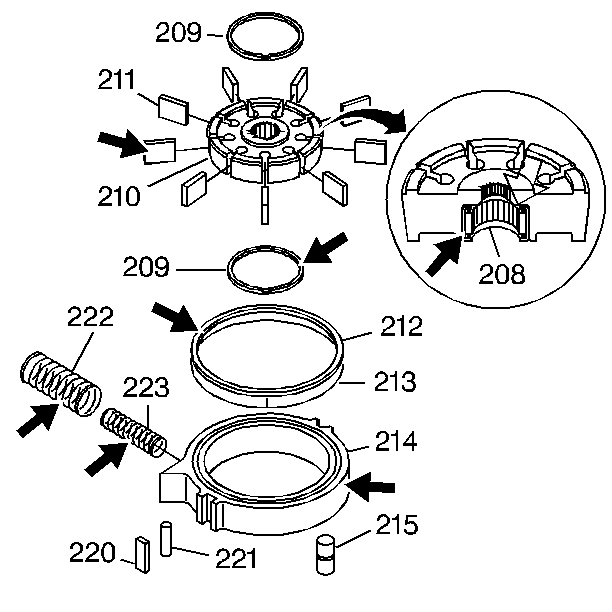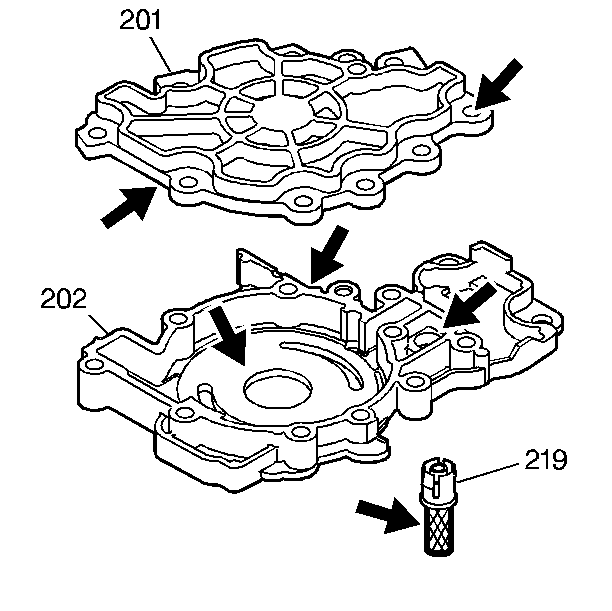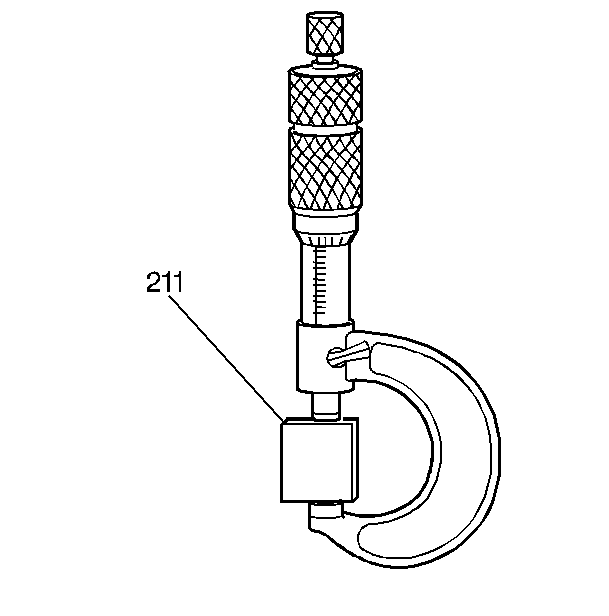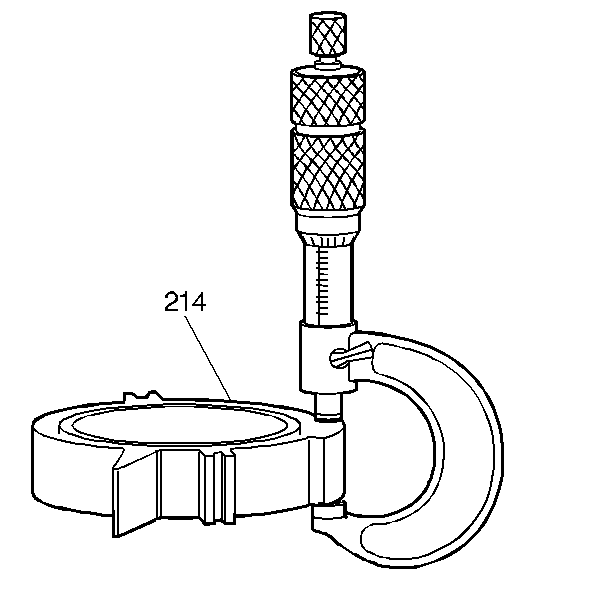
- Inspect the oil pump for:
| • | Worn, scored or gouged pump slide (214) |
| • | Cracks, wear or damage to the rotor (210) or the vanes (211) |
| • | Cuts or damage to the seals (212, 213, 220, 221) |
| • | Broken priming springs (222, 223) |
| • | Damaged oil pump drive shaft bearing (208) (the bearing is not
serviced separately from the rotor). |

- Inspect the oil pump body
(202) for:
| • | A worn, scored or damaged pump pocket |
| • | Interconnected oil passages |
| • | Damaged machined surfaces |
- Inspect the pump outlet screen assembly (219) for damage or debris.
- Inspect the oil pump cover (201) for cracks, wear or gouges from
the pump vanes.

Important: Laser marks on the oil pump body indicate the size of the selective
parts which were used in assembly. If the correct parts are not selected for
replacement, damage to the oil pump and to the transmission will occur.
- Measure the pump rotor (210).
- Select the proper replacement size. Refer to the Rotor Selection
table found in
Oil Pump Specifications
.

- Measure the oil pump vanes (211).
- Select the proper replacement size. Refer to the Vane Selection
table found in
Oil Pump Specifications
.

- Measure the oil pump slide (214).
- Select the proper replacement size. Refer to the Slide Selection
table found in
Oil Pump Specifications
.

- Insert the pump outlet
screen assembly (219).
- Insert the pump slide seal support (221) and the pump slide seal
(220) into the slot on the pump slide (214).
- Insert the pump slide (214) and the slide pivot pin (215) into
the pump body (202).
- Install the outer and the inner priming springs (222, 223) as
an assembly into the pump body (202).
- Install the first vane ring (209) into the pump body (202).
- Insert the pump slide O-ring seal (213) and the pump slide oil
seal ring (212) into the pump slide (214).
- Insert the rotor (210) into the pump body (202).
- Install the pump vanes (211) into the rotor (210). The pump vanes
(211) must be flush with the top of the rotor (210).
- Install the second vane ring (209) onto the top of the rotor (210).
Notice: Use the correct fastener in the correct location. Replacement fasteners
must be the correct part number for that application. Fasteners requiring
replacement or fasteners requiring the use of thread locking compound or sealant
are identified in the service procedure. Do not use paints, lubricants, or
corrosion inhibitors on fasteners or fastener joint surfaces unless specified.
These coatings affect fastener torque and joint clamping force and may damage
the fastener. Use the correct tightening sequence and specifications when
installing fasteners in order to avoid damage to parts and systems.
- Install the pump
cover (201) and the bolt (205).
Tighten
Tighten the bolt to 8 N·m (70 lb in).

- Install the oil pump assembly
(200) onto the control valve assembly (300).

- Install the two pump body
to case bolts (206) and the nine pump cover to case cover bolts (207).
Tighten
Tighten the bolts to 12 N·m (106 lb in).








